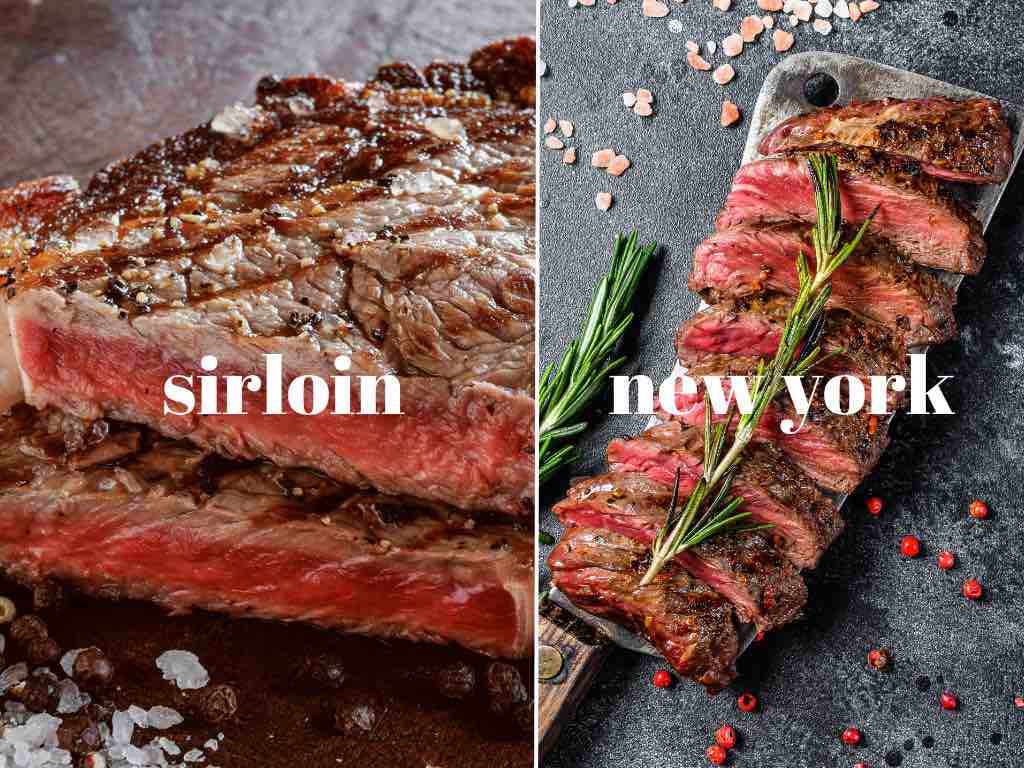
Exploring the Culinary Showdown: Sirloin vs NY Strip Steak
|
|
Time to read 4 min
Welcome to One Stop Halal!
Written by: Samir P.
|
|
Time to read 4 min
In the realm of carnivorous delights, few cuts of meat stand out as prominently as sirloin and New York strip steaks. These two beefy contenders often find themselves in the spotlight on steakhouse menus and backyard grills alike, captivating the taste buds of meat enthusiasts. While both cuts share the exact bovine origin, their differences in flavor, texture, and cooking methods make for an intriguing culinary showdown. In this exploration, we'll delve into the characteristics of Sirloin vs NY strip steaks, helping you confidently navigate the world of beef.
Let's start our culinary journey with the sirloin steak. Located towards the cow's rear, the sirloin is a versatile cut that boasts a balance of tenderness and flavor. The sirloin can be further divided into top sirloin and bottom sirloin, each offering a unique dining experience.
Texture and marbling play crucial roles in defining the sensory experience of a steak, and New York strip vs Sirloin highlights these elements in distinct ways.
In conclusion, while the sirloin and NY strip steaks offer delightful dining experiences, the interplay between texture and marbling underscores the diversity of options within the beef world. Whether you prefer the lean and firm consistency of the sirloin or the marbled tenderness of the NY strip, these characteristics add layers of enjoyment to the art of savoring a perfectly cooked steak.
The choice of cooking method can significantly influence the outcome of NY strip vs top sirloin, as each cut responds uniquely to various techniques, contributing to the overall dining experience.
Ultimately, whether you choose the quick and high-heat approach for sirloin or the slower and controlled methods for the NY strip, the cooking technique plays a vital role in bringing out the best qualities of each cut, creating a steak experience tailored to your preferences.
Welcome to your favorite Butcher Shop. We carry various butcher meat cuts that are hard to find elsewhere. We deliver to your doorstep anywhere in the United States within 1-2 business days.
In the steak world, the battle Sirloin vs NY strip steak is a matter of personal preference. Whether you lean towards sirloin's lean tenderness or the NY strip's rich marbling, both cuts offer a delightful culinary experience. Understanding each steak's characteristics, cooking methods, and flavor profiles can empower you to make an informed choice based on your palate preferences. So, the next time you fire up the grill or visit a steakhouse, savor the nuances of NY strip vs Sirloin steaks and revel in each cut's diverse pleasures.

© 2025 One Stop Halal, Inc.